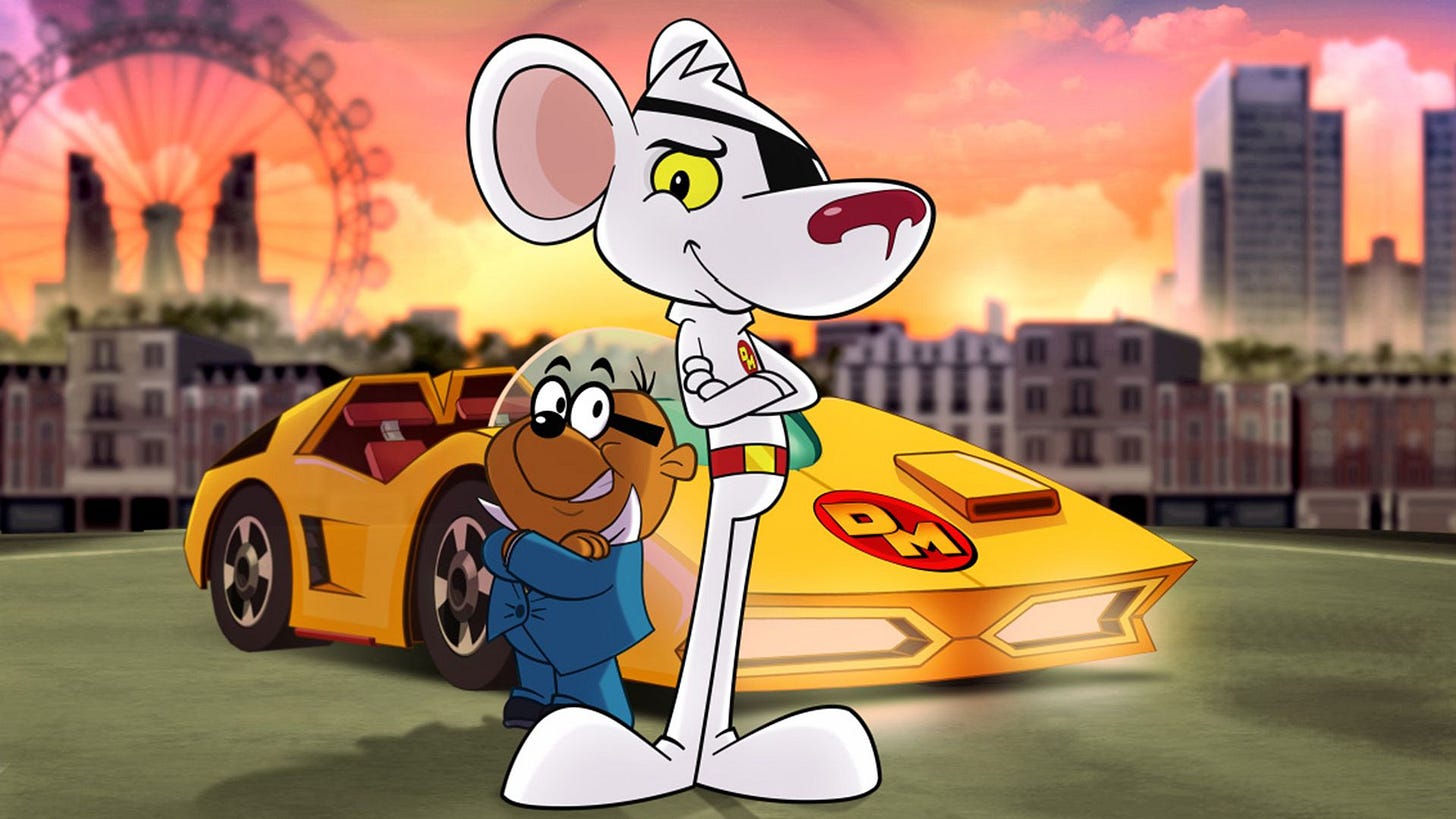I have strong opinions about canon. In fact, I have such strong opinions that I ended up pitching them as an episode of Extra Credits a few years back!
I like this video, because it reflects how conversations about this typically go with me. It comes with the caveat of “we don’t agree with everything Eddy says,” and that’s fine, because I usually start from a place of all canon is stupid and should be ignored, which… doesn’t go over very well.
Why do I have issues with canons? The video explains the main reasons, but the short version is “canon” is largely a construct of hyper-obsessed fandom, and it’s really said fandom that’s the problem. The idea that something canonical is inherently better or objectively more important than non-canonical media is not only hilariously stupid to me, but it’s also actively damaging to continuities. However, most of the examples I can usually point to on these points (Doctor Who, the MCU, Star Wars, and such) usually lead me into debates loaded with personal feelings, so I reserve my arguments for YouTube videos like a normal person.
These thoughts lead me, naturally, to Danger Mouse.
Danger Mouse (or maybe Dangermouse, if you believe the original annuals) was a cartoon in 1982 that was rebooted in 2015. The image above should tell you pretty much all you need to know, if you’re unfamiliar: It’s a British cartoon mouse who is a secret agent with a cool car, and he has a hamster for a sidekick whose name is Penfold (easily 80% of the reason why I went with Penfold for my pension management scheme).
Let’s apply the typical fan canon logic to this dumb cartoon that I actually really love.
In the pilot episode of Danger Mouse (2015) — which I’ll just call DM15 for short — it’s stated that Danger Mouse and Penfold have worked together and fought their main villain (a toad called Baron Greenback) “for years,” but outside of those references, nothing lines up to imply a continuity between the two shows.
For example, in the original Danger Mouse (1982) — or just DM — the team were housed in a red postbox on Baker Street, and the episodes all took place in the context of the human London. DM15 is set in a world where people are just animals, and the postbox is actually the size of a skyscraper, so everything has moved from mouse scale to human scale. Greenback’s name changes from “Silas Greenback” to “Silas von Greenback.” Another character, Count Duckula, isn’t the same Count Duckula as either the original DM nor his own spinoff cartoon called, shockingly, Count Duckula. The 1980s in DM15 are explicitly not the same as the 1980s in DM.
I could keep going, but suffice to say, the shows have enough differences that you could comfortably say this is a reboot, not a continuation, and the shows aren’t in continuity with one another.
Except.
Some episodes of DM15 refer to episodes of DM. Count Duckula is later explained to be a new Count Duckula (a detail that only matters if you know of the original cartoon), and that change in character could be explained by how Duckulas are handled in the spinoff (if you assume he just happens to have the same fixations as the previous Count Duckula). The new car is called the “Mark IV,” and the previous model was the “Mark III”. Professor Squackencluck is the daughter of the previous Professor Squackencluck. There’s clearly continuity of a sort.
Now, this is a silly kid’s cartoon, and DM15 was clearly made by adults who grew up watching DM and just wanted to put in loads of fun references to the original cartoon they loved. Therefore, it’s pretty clear this isn’t actually continuity; it’s just homages in a reboot that reworks a cartoon from thirty years prior for a modern audience. We can easily dismiss all this because it’s a silly cartoon where things aren’t supposed to make sense all the time.
(Let me pause here and share this from Dan200, who whipped this up when I asked in the Sonic the Comic the Podcast Discord server about the correct spelling of Danger Mouse.)
Now let’s move to another silly cartoon, Star Trek: Lower Decks. Same deal, in some ways: It’s made by people who watched and loved the source material (in this case, Star Trek: The Next Generation, Star Trek: Deep Space Nine, and Star Trek: Voyager) and wanted to make loads of funny and lore references to the original shows. Yet everyone from the producers to the writers to the actors to the streaming platforms go out of their way to point out it’s canonical with those shows.
Why does this matter? The short answer is that it doesn’t. But if Danger Mouse had the kinds of fans that Star Trek does, the kinds who would care whether it had that extra space in the name or not and use that as a shibboleth of fan purity, then the makers of DM15 might have had to take pains to determine the canonical nature of their show about a cartoon mouse, which is just as weird as it sounds when you think about it. Ultimately, Lower Decks is canonical because it matters to Star Trek fans that someone says it is, and can prove it through a variety of largely arbitrary metrics. Which, when you think about it, is a deeply pointless exercise.
Of course, I am a Star Trek fan, and I do care that Lower Decks is canonical. So how can I loudly yell that it doesn’t matter, and then have it matter to me?
I maintain, and I will die on this hill, all canons are personal. Every canon is, on some level, a headcanon, one that you keep in your head for yourself. It really, truly, genuinely does not require someone to tell you what’s official, unofficial, quasiofficial, or any other shade of authority for you to enjoy a piece of media. I enjoy thinking of Lower Decks as canonical, and therefore it is.
Anyhow, all this nonsense is my answer when anyone asks me how Realms of Pugmire is “supposed to be run”, because as far as I’m concerned, I don’t care if you use it to run Danger Mouse.
(Who, by the way, is probably a 6th level mouse Ruffian with the Mischief knack if you’re using Squeaks in the Deep. Penfold is probably more of a Rascal.)
News
Red Moon Roleplaying’s campaign of Masks of Nyarlethotep continues! I’ve been having so much fun exploring this classic campaign, and I hope you’re enjoying listening to it. Here are episode four through eight:
Also, I’ve written an antagonist for Curseborne: The Quisivore. Here’s a short summary:
Many of the Accursed — particularly the Ascetic and Archivist Families — ask a lot of questions about the world around them. Most know that asking the wrong kinds of questions of the wrong kind of people or in the wrong kinds of places can get you killed. Very few realize that even the act of asking a question can be horrifying. Thus is the nature of the quisivore.
It appears to be a different kind of predator, one who only feeds on human curiosity. For some strange reason, it’s unable to ask a question itself, and can only feed on those who do ask questions. However, it isn’t one of the Hungry, or even one of the Accursed. As far as anyone who has ever run into one has reported, it’s a pile of strange red ooze that’s able to take a human shape. If it was ever a human, it clearly isn’t one now.
Finally, if you want even more horror, I wrote an adventure for Hunter: The Reckoning 5th Edition. It’s called Cold Case, and here’s a taste of it:
Daria’s friend Sam died three years ago, but now he’s back on the scene. She hopes maybe the Hunters’ cell can help her understand what’s going on. Is it just a case of mistaken identity, or are the dead reallycoming back to life? And what will the Hunters do if they are?
My Media
Today I want to talk about SLA Borg.
First, let me give you the sales text.
Operatives are the creme de la creme, with sponsorship, TV deals and the best training and equipment the World of Progress can offer. Unfortunately, in SLA BORG, this isn't you. Instead, you're idiots that believe, because of the aforementioned crumbling reality, that you are working as Operatives, whilst instead being morons that sniff marker pens, take orders from a cat and get into far too much trouble. You take on missions, eat kebabs to heal yourself and go to the pub to celebrate...simple!
SLA BORG uses the MÖRK BORG rules and gives you a bunch of half-finished pre-generated imbeciles for you to make your own. These twits are part of their very own squad The Broken Biscuits. As them, you travel to the nearby downtrodden bus station and get your missions from a stray cat, who may or may not be Mr Slayer, dodging the people that call the station home and toilet (a great magazine BTW) and heading off to wherever the missions send you.
For context, it’s connected to Nightfall Games’ long-running SLA Industries game. I thought it was going to just be SLA revised to use the Mork Borg game system.
Except it’s not. It’s actually a parody of SLA Industries, made by the same people, taking the core concepts of the game and pointing out how absurd the whole concept is.
Except it’s not. It’s also actually set inside the world of SLA Industries. Basically, there’s a small pocket of spacetime in the game where reality works badly. The PCs are basically cosplaying as SLA Industries PCs, but they suck at it because they’re glue-sniffing morons.
Even better, the rules are part of the joke. The reason why the game system is different? It’s because the characters are delusional idiots stuck in a chunk of reality that’s warped and twisted, so nothing works right. They heal by eating kebabs because they think that’s true, so it is. The game goes out of its way to point out that not only can other characters not heal this way, but also it only works in this exact chunk of reality.
It’s a self-aware self-parody using a different and popular game system to help sell the joke of trying to chase what’s differnet and popular while also poking quite a bit of fun at the whole concept of what constitutes an “official” game and why “canon” is a stupid concept.
Wait did I just tie the My Media section to the main body of the newsletter?
With that bombshell, I’m off. See you next month!






